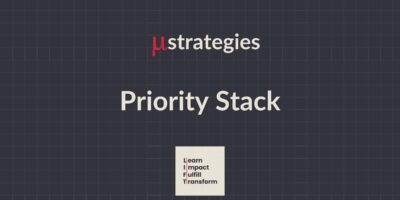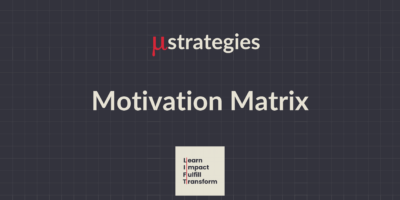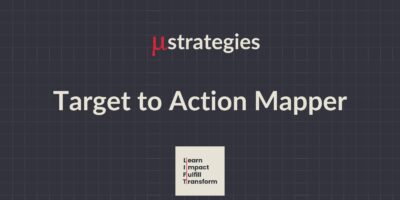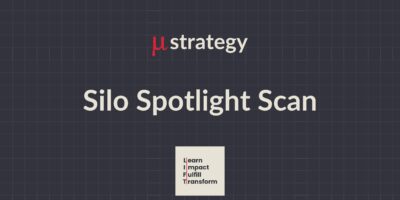|
Greetings Transformation Leaders!
Welcome to Edition 6!
Ask yourself – what if technology investments could unlock exponential business outcomes?
In this edition, we dive into how to:
• Engineer Value: Align investments with business KPIs for measurable success.
• Scale Effectively: Build systems that multiply returns across markets.
• Measure Impact: Track real-time outcomes to course-correct faster.
Inside, you’ll find:
• A fintech case study showcasing 3x processing capacity and 55% time savings.
• A Value Multiplication Calculator to prioritize high-ROI initiatives.
• Practical frameworks to ensure your technology delivers more than deployment metrics—it drives transformative results.
Ready to turn potential into exponential? Let’s dive in.
Warm regards,
Adi
LEADER’S VIEW
“You have delivered the technology, but where’s the business value?”
This question from a CEO during a $100M+ transformation review with their CTO and Digital leadership team captures a universal challenge.
After guiding multiple global enterprises through complex technology transformations, I’ve learned that technology value isn’t delivered – it’s engineered.
While many focus on deployment metrics, the true measure of success lies in business outcomes.
Today, we will share the framework that has helped technology leaders turn investments into measurable, multiplied returns.
VALUE ENGINEERING CHALLENGE
Most technology transformations face a common set of obstacles:
- Unclear connection between investments and business outcomes
- Extended timelines for value realization
- Difficulty scaling success across the enterprise
- Complex stakeholder expectations
- Challenges measuring and attributing returns
THE FRAMEWORK: VALUE MULTIPLICATION MODEL
Three core components drive successful value engineering:
-
Value Architecture
-
Map business outcomes to technology investments
- Create a simple two-column spreadsheet mapping each technology investment to specific business KPIs and target outcomes
-
Align KPIs with stakeholder expectations
- Hold structured interviews with key stakeholders to define success metrics they care about most
-
Create clear value realization pathways
- Document step-by-step value capture plans for each major investment, including timing and dependencies
- Example: A financial services company increased retention rates by 15% by mapping cloud infrastructure improvements to specific customer satisfaction drivers and creating clear measurement pathways.
-
Scale Engineering
-
Identify multiplication points for maximum impact
- Review your value chain to find processes or capabilities that, when improved, create ripple effects across multiple areas
-
Design for global scalability from day one
- Build a scalability checklist covering technology, process, and organizational requirements
-
Build automation into core processes
- Start with a simple process inventory and score each on automation potential and business impact
- Example: A global fintech automated loan processing workflows across regions, reducing processing time by 40% while maintaining compliance standards.
-
Measurement Systems
-
Deploy real-time value tracking
- Build simple dashboards starting with 3-5 key metrics that directly link to business outcomes; avoid vanity metrics
-
Focus on leading indicators
- For each key outcome, identify 2-3 early warning metrics that predict future performance
-
Create feedback loops for rapid adjustment
- Set up weekly review cycles with clear escalation paths when metrics deviate from targets
IMPLEMENTATION GUIDE
Quick Wins (60-Days)
- Map current value streams and conduct efficiency analysis
- Implement streamlined support workflows to reduce resolution times
- Deploy basic measurement dashboards with automated alerts
- Quick win target: 15-20% efficiency improvement in high-touch processes
Medium Term (180 Days)
- Scale successful pilots across regions or departments
- Implement predictive maintenance solutions to reduce downtime
- Build multiplication points into core processes
- Target: 25-30% improvement in operational efficiency metrics
Long Term (365 Days)
- Establish a dedicated “Value Council” to oversee ROI assessments
- Deploy global scale mechanisms with local adaptations
- Institute continuous improvement cycles with quarterly reviews
- Goal: Sustainable value multiplication framework generating 3-5x returns
CASE STUDY: VALUE IN ACTION
A leading fintech lending and leasing platform faced a critical decision: how to modernize its legacy loan processing infrastructure to support rapid global expansion. With operations in 12 countries and ambitious growth targets, they needed to prove their transformation approach before committing to a full-scale investment.
Pilot Approach
Initial investment: $10M
Scope: Digital lending platform transformation in two key markets
Timeline: 6 months
Target: Prove 40% efficiency gain and 25% cost reduction
Results:
55% reduction in loan processing time
35% decrease in operational costs
90% improvement in data accuracy
Customer satisfaction increased by 28%
Processing capacity increased 3x
Scale Decision: Based on pilot success, the board approved a $90M global investment:
Phase 1: $40M (months 1-12) – Core markets expansion
Phase 2: $50M (months 13-24) – Remaining markets and capability enhancement
Key Moves:
-
Started small but designed for scale
- Built modular architecture that could flex by market
- Created standardized yet configurable workflows
- Established clear value measurement frameworks
-
Proved value quickly
- Focused on high-impact processes first
- Demonstrated concrete efficiency gains
- Built stakeholder confidence through early wins
-
Scaled systematically
- Used pilot learnings to refine approach
- Created regional acceleration teams
- Established global centers of excellence
24-Month Outcomes:
- Platform operating in all 12 markets
- $175M annual cost savings realized
- Loan processing time reduced by 65%
- Customer base grew by 40%
- New product launch time reduced from 6 months to 6 weeks
- ROI exceeded 300% vs. original target of 200%
Critical Insight: The pilot-then-scale approach not only de-risked the transformation but actually accelerated it. By proving the concept in a contained environment, the team gained insights that made the global rollout more efficient and effective than originally planned.
LEADERS TOOLKIT: VALUE ENGINEERING ASSESSMENT
-
Evaluate Current Capabilities:
- Assess your organization’s readiness across the three core components: Value Architecture, Scale Engineering, and Measurement Systems.
-
Score Key Initiatives Using RICE:
- For each initiative, calculate a RICE score by rating Reach, Impact, Confidence, and Effort.
- Prioritize initiatives with high RICE scores (above 300) for immediate focus.
-
Map Value Streams:
- Identify and document one critical value stream where outcomes are unclear or underperforming.
- Use a simple spreadsheet to link technology investments to specific KPIs or business outcomes.
-
Conduct a Quick-Win Analysis:
- Highlight one initiative where minimal effort could yield significant impact (e.g., improving automation or real-time tracking).
- Define actionable steps to implement improvements within 30 days.
-
Build a Scoring Dashboard:
- Set up a simple dashboard to track your component and RICE scores, ensuring visibility into value creation.
- Automate alerts for metrics deviating from targets to enable rapid adjustments.
-
6. Run a Team Review Session:
- Share your findings with cross-functional digital leaders to validate scores and refine priorities.
- Collaboratively identify 2-3 specific areas for immediate enhancement based on the assessment results.
These actions will give you a clear starting point to optimize your value engineering practices and demonstrate measurable progress. Let me know if you’d like further clarification or supporting templates!
Access: Value Engineering Assessment Tool
Remember: Value from technology investments isn’t a byproduct – it’s an engineered outcome.
Start with your value assessment this week. Map one critical value stream and identify three potential multiplication points. Small actions, consistently applied, create exponential returns
Tool in this edition
Access: Value Engineering Assessment Tool
Follow
Share this newsletter with friends
|








Comments